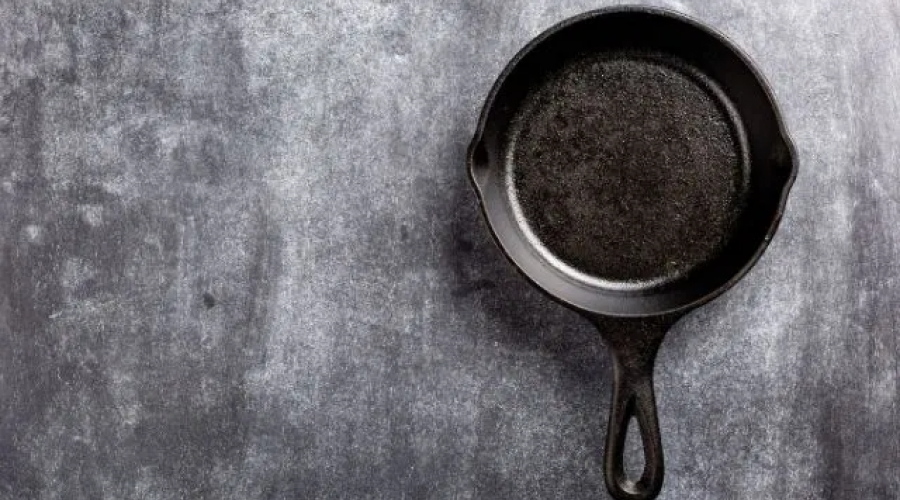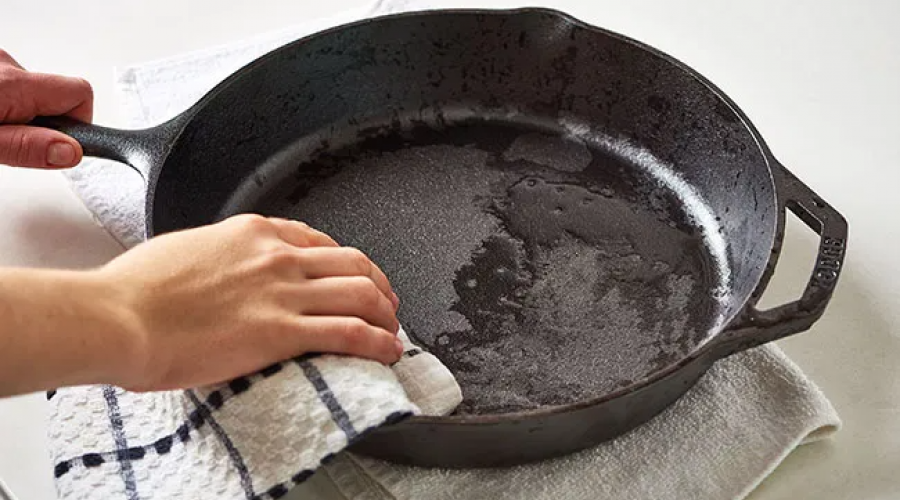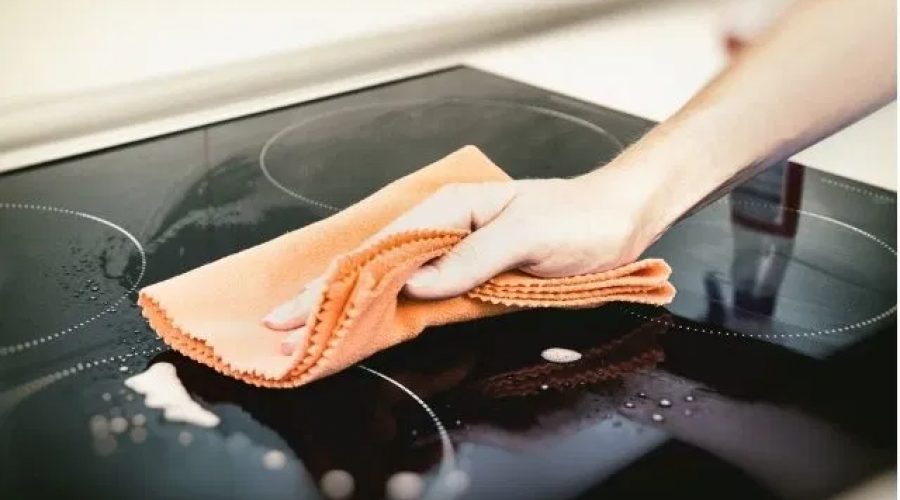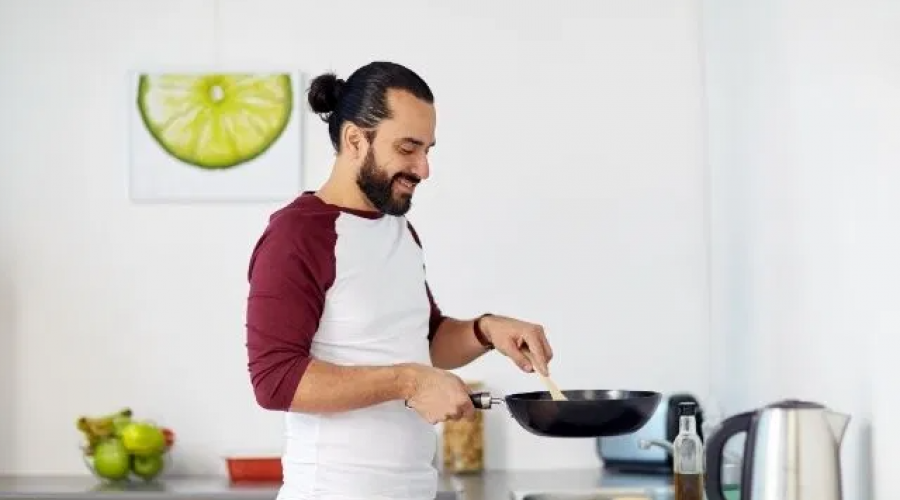A glass top stove is undoubtedly a stylish addition to any kitchen. It’s easy to maintain, sleek, and works with most styles of kitchen aesthetics. Sadly, however, glass stovetops are susceptible to scratches from pans, pots, and utensils.
And this now brings us to the question of the day – can you use cast iron on a glass cooktop, or will the rough surface of cast iron scratch the smooth surface of a glass countertop?
Well, that question is what we here at HomeDesignX aim to answer. So, let’s dive right in…
Can You Use a Cast Iron Skillet On a Glass Top Stove?

One main disadvantage glass top stoves have is that their surface is prone to scratches from cookware. Because of this, experts recommend that certain cookware types not be used on the stoves, like stoneware and cast iron.
The following are some good reasons why such materials aren’t recommended.
- Weight: A pan made from cast iron is heavy. Generally speaking, an empty cast-iron skillet can weigh anywhere between 6 and 8 pounds. And that’s without a lid, which can weigh an additional 5 pounds. Add food and the pot will become significantly heavier.
Now, that’s a lot of weight resting on a glass cooktop. Admittedly, though, glass cooktops are designed to handle such weight. So, with a little care, you’ll be able to use it just fine. (More on this later).
- Size: Another disadvantage cast iron skillets have is their size. Generally speaking, many cast iron skillets and pots are slightly larger than the stove burners. And this often leads to poor distribution of heat on the cookware.
For even distribution of heat, experts recommend that the cookware be at most 1-inch bigger than the glass stove burner. Using big cast iron pans would be inefficient in regards to heat.
What’s more, the larger size of the cast iron cookware can also cause damage or reduce the useful life of the heating element.
- Cookware Bottom: One quality of a good pot or pan is having a flat bottom. A flat bottom allows even distribution of heat. Pans made from cast iron don’t usually have a smooth, flat bottom.
Their bottoms are rough, and this can easily cause scratches to your stove.
- Surface Finish: Last but not least, the surface finish of cast iron is another reason to steer clear of using cast iron. It’s rough and that can cause scratches on a glass stove top. Those coated with porcelain enamel, however, do have a smooth and even finish. So, the next time you are out shopping, consider buying those ones instead.
How To Protect a Glass Top Stove From Cast Iron
If you have cast iron skillets and pots, all hope is not lost. It’s not impossible to safely use cast iron on a glass stove top.
With a little bit of care, you can still use them without causing any scratches or damage to the glass top stove.
1. Lift the cast iron skillet.
Now, one thing you’ll want to do when cooking is lift the cast iron skillet or pot as opposed to sliding. Even when doing it slightly, you’ll want to lift the cookware about half an inch to make sure you don’t scratch the glass top.
It also goes without saying that you should pay attention not to drop the pan. Form the habit of always lifting the cookware with both hands to ensure your grip is firm.
2. Wash cast iron skillets before use.

Another thing you’ll want to do is wash the pan before and after cooking.
Pans made from cast iron tend to collect more oil and food particles than any other cookware type. So, if you fail to wash it prior to use, the oil and food deposits can begin carbonizing.
The result? Your glass surface will accumulate stains and smudges. Over time, the stains and smudges will become increasingly hard to get rid of.
3. Use a heat diffuser.
Besides lifting a cast iron skillet and washing it before use, you’ll also want to use a heat diffuser. A glass diffuser is an aluminum disk that’s attached to a metal handle. It is designed to ensure that heat is uniformly transferred throughout the entire device.
It is an alternative to a double boiler. You can buy one from your local home or hardware store for anywhere between $7 and $20.
To use a heat diffuser, all you have to do is place it on your glass stovetop and then carefully place the cast iron pot or pan on top.
just like the cookware, you’ll also want to clean the diffuser regularly. Place it in the sink and use pea-sized amount of dish soap to clean it out. Ideally, use warm water as this will help dissolve any food and greasy substances. Then leave it to dry on a rack.
4. Modernize your cast-iron cookware.
For the best cooking experience, you’ll want to modernize your cast iron skillet set. After all, buying a gas top stove is a considerable expense. As such, it would only make sense to upgrade your cast iron set as well.
Modern cast iron cookware is smoother and has a sleeker finish as compared to older ones. So, if your iron cookware looks damaged or has some rough bumps on the bottom, then consider replacing it before using it.
5. Clean the surface of the glass top stove on a regular basis.
It’ll be no use if you clean your cast iron cookware thoroughly but neglect to clean the glass top surface of your stove.
When first installed, glass cooktops look modern and elegant. However, you’ll need to maintain it in order to keep its lustrous look. That’s because burnt food and spills and splashes from your cookware will quickly smear the glass top surface.

Over time, the residue built up can harden and lead to ugly scratches. To prevent this, you’ll need to clean both the cookware and the stove before and after every cooking session.
In addition to the daily wipes, you’ll also want to do a deeper clean every once in a while.
How To Keep a Glass Top Stove From Scratching
It’s simple!
Unlike ceramic or other materials, a glass top can easily get damaged. The following are some tips to help you keep your glass top stove free from scratches.
- Be cautious when using cookware made from cast iron, ceramic or stoneware. Wash them before use, and avoid sliding them on the glass top stove. Otherwise, over time, your glass stovetop will have ugly scratches.
- Use the right utensils. When you are cooking, you’ll want to use a spoon tray to hold utensils like whisks and spoons. Leaving them on top of the glass top stove can not only get them burned but can also scratch the glass surface.
- Avoid placing items on the glass top stove altogether. It may be tempting to place cookware on the stovetop stove to cool after removing them from the oven. Doing so repeatedly can cause the glass surface to discolor. What you’ll want to do is place the hot cookware on top of a trivet on the counter.
Alternatively, you could also place the hot cookware on a cooling rack over the glass top stove. - Always ensure that the surface of the glass top stove is clean. Once you are done cooking, ensure the bottom of the cookware is clean. That’s because grease and food deposits can undergo carbonation over time. The hardened food particles will then cause scratches onto the glass top surface of your stove.
- Choose flat bottom pans. These usually tend to be more stable compared to cookware that has round-bottom edges.

So, in conclusion –
Can you use cast iron on a glass top stove?
Yes, you can use cast iron on a glass top stove, but you’ll need to be extra careful. After reading this guide, you can follow the tips we outlined to safely cook with cast iron skillets and pots on a glass top stove.